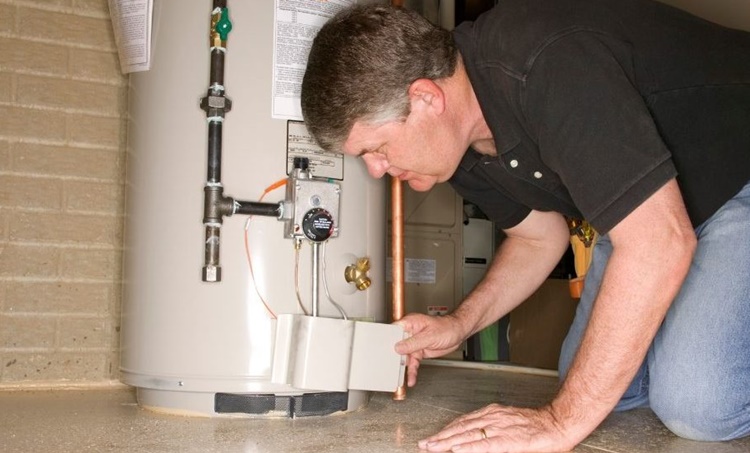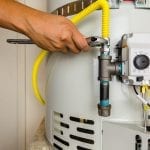Are you currently searching for facts on What Kind of Maintenance Do Water Heaters Need??

Hot water is important for everyday convenience, whether it's for a revitalizing shower or washing meals. To guarantee your warm water system runs efficiently and lasts longer, routine maintenance is crucial. This write-up offers sensible tips and understandings on just how to maintain your home's warm water system to stay clear of disruptions and expensive repairs.
Introduction
Preserving your home's warm water system might appear overwhelming, but with a few straightforward steps, you can ensure it runs efficiently for years to come. This overview covers every little thing from understanding your hot water system to DIY upkeep pointers and knowing when to contact specialist aid.
Importance of Preserving Your Warm Water System
Normal upkeep not only extends the life expectancy of your hot water system however additionally guarantees it operates efficiently. Overlooking upkeep can cause lowered efficiency, higher energy bills, and even premature failing of the system.
Indicators Your Warm Water System Demands Upkeep
Knowing when your hot water system needs attention can avoid major issues. Look out for indications such as inconsistent water temperature, odd sounds from the heating unit, or rustic water.
Purging the Hot Water Heater
Purging your hot water heater gets rid of debris build-up, boosting performance and lengthening its life.
Monitoring and Changing Anode Rods
Anode poles stop rust inside the storage tank. Checking and replacing them when worn is important.
Complicated Concerns Calling For Professional Help
Examples consist of significant leakages, electric issues, or if your water heater is regularly underperforming.
Routine Professional Maintenance Conveniences
Specialist upkeep can include extensive inspections, tune-ups, and making sure compliance with safety standards.
Inspecting and Readjusting Temperature Level Settings
Adjusting the temperature setups makes sure ideal performance and safety.
Do It Yourself Tips for Maintenance
You can carry out several upkeep tasks yourself to maintain your warm water system in top problem.
Checking for Leakages
Frequently inspect pipes and connections for leakages, as these can lead to water damages and higher bills.
Recognizing Your Warm Water System
Before diving right into upkeep tasks, it's practical to comprehend the basic parts of your hot water system. Typically, this consists of the water heater itself, pipelines, anode poles, and temperature controls.
Month-to-month Upkeep Tasks
Routine monthly checks can aid catch small problems before they rise.
Evaluating Stress Alleviation Valves
Checking the pressure safety valve ensures it operates properly and protects against extreme stress accumulation.
Protecting Pipes
Shielding hot water pipelines decreases warmth loss and can save power.
When to Call a Professional
While do it yourself upkeep is advantageous, some concerns require professional know-how.
Conclusion
Normal maintenance of your home's warm water system is essential for effectiveness, long life, and price savings. By adhering to these tips and understanding when to look for professional aid, you can ensure a trustworthy supply of warm water without unforeseen interruptions.
Water Heater Maintenance Tips
Test the TPR Valve
Shut off the power and the cold-water supply valve. Place a bucket under the pipe connected to the temperature-pressure-release (TPR) valve on the top or side of the tank. (This valve opens if the tank pressure gets too high.) Lift the valve’s tab to let some water out, then let go. If water keeps flowing, drain the tank partway, unscrew the old valve with a pipe wrench, and install a new one. Check the Anode Rod
Put a hose to the tank’s drain cock and let out a few gallons of water. Now fit a 1 1/16-inch socket onto the rod’s hex head on top of the heater (or under its top plate) and unscrew the rod. If it’s less than ½ inch thick or coated with calcium, buy a new one, wrap its threads with Teflon tape, put it back in the tank, and tighten securely. Use this segmented rod if headroom above the tank is limited. Drain the Tank and Wash Out Sediment
Drain the remaining water in the tank into the bucket, then stir up the sediment on the tank’s bottom by briefly opening the cold-water supply valve. Drain and repeat until clean water comes out of the hose. Close the drain cock, refill the tank, and turn its power back on. Adjust the Temperature
Find the temperature dial on the side of the tank and unscrew its cover. Adjust the dial to 120 degrees using a flathead screwdriver. For every 10 degrees the temperature is lowered, you can expect to save up to 5 percent in energy costs. Turn the water heater off or the thermostat down to its lowest setting if you plan to be away from home for more than three days. Insulate the Pipes
Buy some self-sticking 3/8-inch-thick foam pipe insulation that matches the pipes’ diameter. Slide the foam over the hot-and cold-water pipes as far as you can reach. Insulating the cold-water pipe prevents condensation in summer. Peel the tape and squeeze the insulation closed. If the pipe is 6 inches or less from the flue, cover it with 1-inch-thick unfaced fiberglass pipe wrap. https://www.thisoldhouse.com/plumbing/21016402/how-to-maintain-a-water-heater

Hopefully you enjoyed our excerpt on What Kind of Maintenance Do Water Heaters Need?. Thanks for taking the time to browse our piece of content. Sharing is nice. Helping others is fun. I thank you for reading our article about Tips on Maintaining a Water Heater.
Click Here